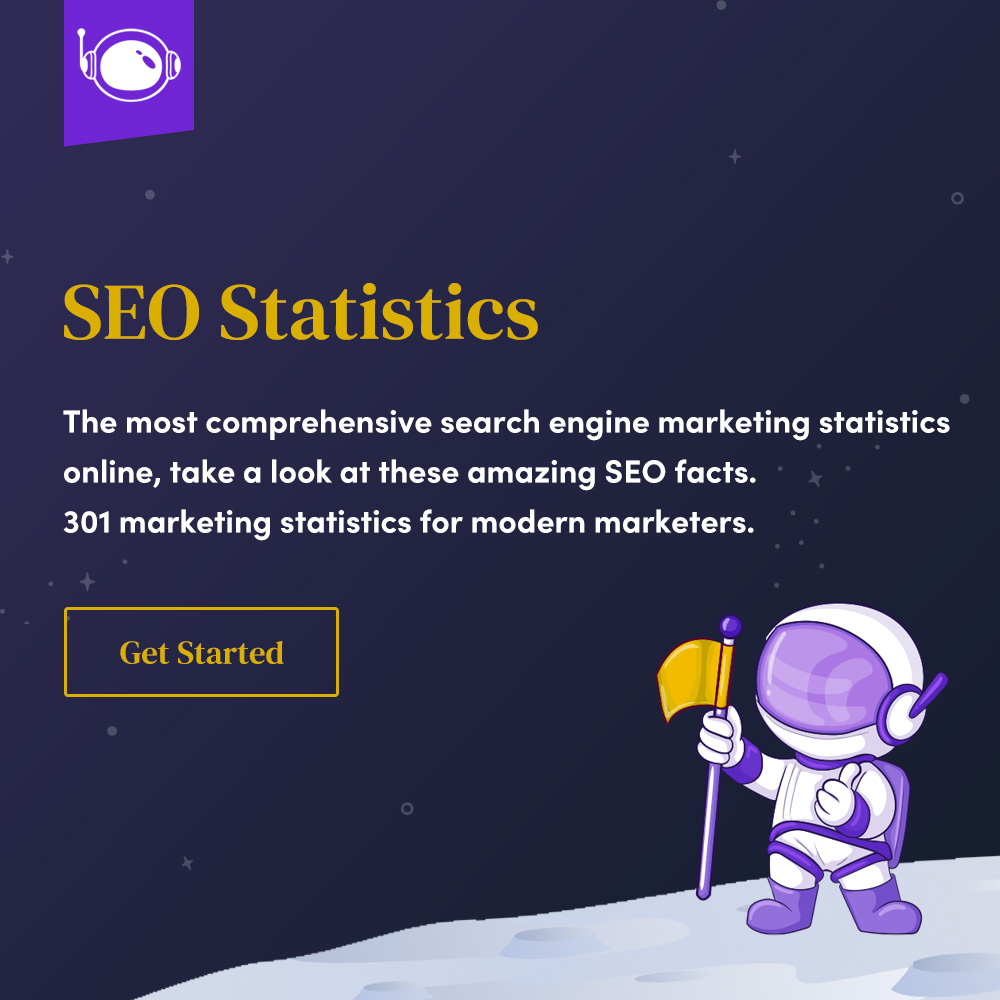1WordPress accounts for 27% of all websites around the world according to W3Techs data, but only about 40% of WordPress sites are up to date.
274% of business owners consider an SEO provider’s reputation “very” or “extremely” important. Monthly cost and the provider’s own Google rankings were also noted as important factors.
390% of B2B researchers who are online use search specifically to research business purchases.
488% of shoppers trust online reviews as much as they trust personal recommendations.
544% of small business owners leave their current SEO provider largely due to “Dissatisfaction with business results”. 34% cite “customer service/ responsiveness” as a key reason they left. Only 21% leave because they were pitched by a competitor.
652% of buyers strongly agree that if brands packaged relevant content together, it would help expedite the research phase.
784% of marketing professionals say they outsource all or part of their SEO implementation to specialists.
860% of small businesses that want a website say they don’t have time to launch one.
982-87% of internet users research a product online before making a purchase.
1014% of small businesses see technology as increasing their competitive advantage.
1148% of customers will stop considering a business if it doesn’t have a website.
1244% of Fortune 500 company websites are not mobile-friendly.
131 in 10 blog posts are compounding, meaning organic search increases their traffic over time.
1482% of consumers enjoy reading relevant content from their favourite brands.
1582% of SEO clients are looking to increase traffic.
1690% of searchers haven’t made their mind up about a brand before starting their search.
1783% of customers say a search is ‘important’ or ‘very important’ when finding or considering a business.
1896% of survey respondents use keyword research and topic importance as the two deciding factors in their SEO strategy.
19SEO packages had a correlation between higher spending and higher client satisfaction. In fact, clients that spent over $500/month were 53.3% more likely to be “extremely satisfied” compared to those that spent less than $500/month.
20Usability experts claim that it should only take three clicks to find any given page.
21Under 1 minute: The all-in time of the average Google Search session.
2216% of small businesses see technology as a tool for innovation.
23Two seconds is all companies get when it comes to website load time. Anything longer increases bounce rates by 50%.
24The two most popular activities people engage in online are search and email.
2555% of small businesses believe online reviews are important to customers.
26SEO provider turnover is high. 65% of our panel stated that they’ve worked with several different SEO providers. 25% have worked with 3 or more providers.
27Adding the word "because" to your outreach emails can increase the response rate by up to 45% according to email outreach studies.
2871% of B2B researchers being their research with generic Google Searches.
2972.02 billion: The estimated amount of brands and agencies in the United States will shell out for SEO services in 2018. The amount is forecasted to rise up to $79.27 billion by 2020.
3064% of B2B buyers noted they give more credence to peer reviews, user-generated feedback, and third-party publications and analysts over that of brands.
31Studies show that businesses with a strong keyword in their company name rank 1.5 spots higher in search engine results on average.
32Monthly podcast listeners grew from 24% of Americans to 26% year over year.
33In 2018, the average firm is expected to allocate 41% of their marketing budget to online, and this rate is expected to grow to 45% by 2020.
34Only 50% of small businesses have a website.
35Only 30% would recommend their current SEO provider to a friend or colleague.
3671% of customers want to contact businesses through multiple channels.
3761% of business owners cite that “increasing brand awareness” is important to them.
3847% of all websites worldwide use a Content Management System (CMS) as their development platform.
39Nearly 80% of users ignore paid ads in search results.
40Around 30% of all searches will be performed without a screen by 2020.
41Most small business owners find SEO providers through referrals, Google Searches, and online reviews. A small fraction of SEO clients (8%) found their current provider from online advertising.
4247% of polled consumers expect a page to load within two seconds.
4378% of US-based small business owners consider their SEO provider’s location a “very” or “extremely” important consideration.
4466% of buyer intent keywords are paid clicks.
4571% of mobile searchers expect mobile pages to load as fast or faster than desktop sites.
46American small businesses spend an average of $497.16 per month on SEO services.
47Most small business owners expect SEO agencies to help them drive immediate growth to their customer base and bottom line. Specifically, 83% of our respondents stated that SEO providers should be able to help them “access new customers”.
48Marketers see SEO as becoming more effective, with 82% reporting effectiveness is on the rise and 42% of this group stating effectiveness is increasing significantly.
4967% of customers won’t consider a business with unfavourable online reviews.
50Research indicates that as page load time goes from one second to 10 seconds, the probability of the user bouncing increases by 123%.
51Improving SEO is the biggest priority for 61% of companies.
5268% of companies have integrated mobile marketing into their marketing strategy.
53Amazon was the brand with the biggest overall improvement in organic search performance on Google in 2018, with a 21% increase in search visibility.
